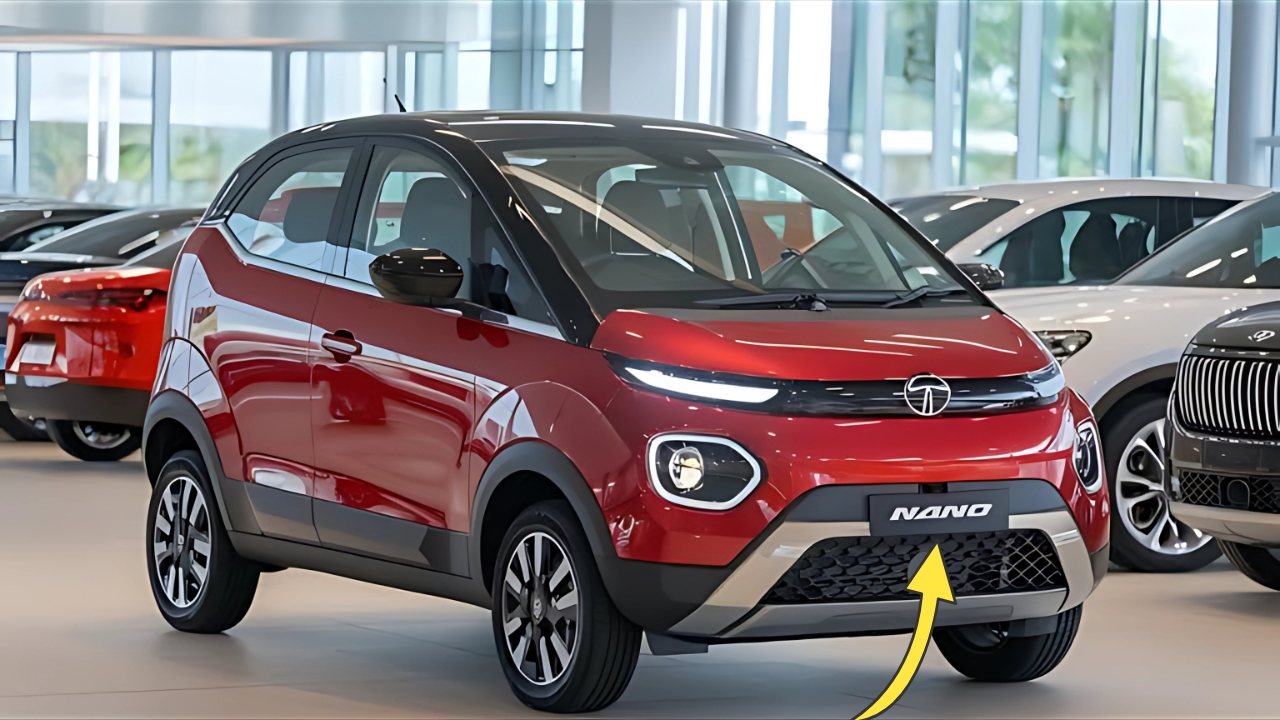Tata Nano EV: In a world increasingly concerned with sustainability and environmental impact, electric vehicles (EVs) have emerged as a promising solution to reduce carbon emissions in the transportation sector.
However, high costs have often been a barrier to widespread adoption, particularly in developing markets. Enter the Tata Nano EV – a revolutionary concept that aims to democratize electric mobility by making it accessible to the masses.
The Rebirth of an Icon
The original Tata Nano, launched in 2008, gained worldwide attention as the “people’s car” with its ambitious goal of providing affordable four-wheel transportation to millions.
While the original Nano had mixed commercial success, its legacy lives on as Tata Motors reimagines this iconic model for the electric age.
The Tata Nano EV represents more than just a new product – it symbolizes India’s commitment to sustainable transportation and technological innovation.
By electrifying one of its most recognizable models, Tata Motors is making a bold statement about the future of mobility in emerging markets.
Design and Dimensions
The Tata Nano EV maintains the compact footprint of its predecessor while incorporating modern aesthetic touches befitting an electric vehicle.
Its small dimensions make it ideal for navigating congested urban environments where parking spaces are at a premium.
Despite its compact exterior, the Nano EV is designed to comfortably accommodate four passengers. The clever packaging of electric components allows for a surprisingly spacious interior, maximizing every inch of available room.
The front-wheel-drive layout ensures stable handling and efficient power delivery, making it well-suited for city driving.
Powertrain and Performance
At the heart of the Tata Nano EV is an electric powertrain that delivers smooth, silent, and emission-free operation.
Based on available information, the Nano EV is expected to feature a lithium-ion battery pack with capacity options ranging from 17-25 kWh, depending on the variant.
Performance specifications, while modest compared to premium electric vehicles, are perfectly adequate for urban commuting. The Nano EV is anticipated to produce between 40-55 kW of power and 100-140 Nm of torque, enabling a top speed of around 80-150 km/h.
Acceleration from 0-60 km/h is expected to take approximately 6-10 seconds, providing sufficient pep for city driving conditions.
Range and Charging
For budget-conscious consumers, range anxiety is a significant concern when considering an electric vehicle. The Tata Nano EV addresses this by offering a practical driving range of approximately 150-200 km on a single charge for base models, with higher-end variants potentially reaching 250-400 km.
This range is more than sufficient for daily urban commuting, where the average driving distance rarely exceeds 50 km per day. For longer journeys, the Nano EV is expected to support both standard AC charging and DC fast charging capabilities.
With a fast charger, the battery could reach 80% capacity in approximately 60 minutes, while a complete charge using a standard home outlet would take 6-8 hours.
Features and Technology
Despite its affordability, the Tata Nano EV doesn’t skimp on modern features. The interior is expected to be equipped with:
-
Touchscreen infotainment system with smartphone connectivity
-
Digital instrument cluster
-
Regenerative braking system
-
Power windows
-
Air conditioning
-
Steering-mounted controls
-
Connected car technology with remote monitoring
Safety features are also a priority, with the Nano EV likely to come equipped with:
-
Dual front airbags
-
ABS with EBD
-
Rear parking sensors
-
ISOFIX child seat anchors
-
Reinforced body structure
Variants and Pricing
Tata Motors is expected to offer the Nano EV in multiple variants to cater to different budget segments.
The entry-level variant will focus on providing basic electric mobility at the lowest possible price point, while higher-end variants will offer additional features and potentially larger battery packs for extended range.
While official pricing hasn’t been announced, industry speculation suggests that the Tata Nano EV could be priced between ₹5-9 lakh (ex-showroom), making it one of the most affordable electric cars in India.
At this price point, it would represent a compelling alternative to entry-level petrol hatchbacks, especially when factoring in the lower running costs of electric vehicles.
Market Impact and Competition
The introduction of the Tata Nano EV could have far-reaching implications for India’s electric vehicle landscape.
By offering an affordable electric option, Tata Motors is addressing one of the most significant barriers to EV adoption in price-sensitive markets.
Currently, the most affordable electric car in India is the MG Comet EV, priced at around ₹7 lakh.
The Tata Nano EV would compete directly with this model while potentially establishing a new price benchmark for electric vehicles in the country.
Beyond direct competition, the Nano EV also positions itself as an alternative to conventional petrol hatchbacks like the Maruti Suzuki Alto and WagonR, appealing to environmentally conscious consumers looking to make the switch to electric mobility without breaking the bank.
Challenges and Opportunities
While the concept of an affordable electric vehicle is compelling, the Tata Nano EV faces several challenges.
The development costs of electric vehicles remain high, and achieving the targeted price point without compromising on quality and features will be a significant challenge for Tata Motors.
Additionally, concerns about charging infrastructure, especially in smaller cities and rural areas, could limit the appeal of the Nano EV beyond metropolitan regions.
However, the Indian government’s push for electric mobility through schemes like FAME II (Faster Adoption and Manufacturing of Electric Vehicles) provides a supportive policy environment for the launch of affordable electric vehicles.
From a business perspective, the Nano EV represents an opportunity for Tata Motors to strengthen its position in the growing electric vehicle segment.
The company already offers electric versions of the Nexon, Tigor, and Punch, and adding an entry-level electric car would complete its portfolio and help capture a larger share of the market.
Environmental Impact
The environmental benefits of the Tata Nano EV extend beyond just zero tailpipe emissions. As India continues to expand its renewable energy capacity, the carbon footprint associated with charging electric vehicles will progressively decrease, making EVs even more environmentally friendly over time.
For urban areas plagued by air pollution, the widespread adoption of electric vehicles like the Nano EV could contribute significantly to improving air quality and public health.
By making electric mobility accessible to a broader segment of the population, the Nano EV could accelerate the transition away from fossil fuel-powered transportation.
The Road Ahead
While Tata Motors has not officially announced a launch date for the Nano EV, industry speculation suggests that it could hit the market by 2025.
The company is likely in the process of testing prototypes and finalizing specifications, with a formal announcement expected in the coming months.
For potential buyers, the Tata Nano EV represents an opportunity to embrace electric mobility at an accessible price point.
Its combination of compact dimensions, practical range, and modern features makes it an attractive proposition for urban commuters looking to reduce their environmental footprint without compromising on convenience or affordability.
Tata Nano EV
The Tata Nano EV embodies the democratic spirit of its predecessor while embracing the technological advancements of the electric age.
By making electric mobility accessible to the masses, it has the potential to accelerate India’s transition to sustainable transportation and set a precedent for affordable electric vehicles in other emerging markets.
As the automotive industry undergoes a fundamental transformation, the Tata Nano EV stands as a testament to the belief that sustainable mobility should not be a luxury but a right accessible to all.
If successful, it could redefine what we expect from entry-level electric vehicles and play a crucial role in shaping the future of transportation in India and beyond
In a world where sustainability and affordability often seem at odds, the Tata Nano EV offers a glimpse of a future where they can coexist, bringing the benefits of electric mobility to a wider audience and contributing to a cleaner, greener tomorrow.
Also read this –

